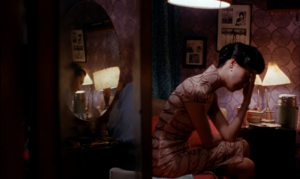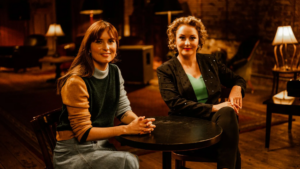In June 2019, eight staff members from the cash-strapped National Film and Sound Archive of Australia (NFSA) took voluntary redundancy packages. It was sad evidence of a vital cinematic body in decline, having endured consistent cuts to its budget as a result of the federal government’s efficiency dividend.
There has been some better news of late, with the Archive announcing in December last year that it had secured an extra A$41.9 million in federal government funding ‘to digitise the nation’s at-risk audiovisual heritage’.
For NFSA CEO Patrick McIntyre, who started in his position in late October last year after eleven years as the executive director of the Sydney Theatre Company, the cavalry arrived just in time:
Basically, everything on magnetic tape is at risk of being lost – audio and video. It’s an outmoded technology, and naturally decays over time. And because it was very widely used for a long period through the twentieth century, it means that a good portion of the whole collection was at risk. The funding has enabled us to massively fast-track the digital preservation of at-risk items, starting with magnetic tape but also getting to other physical carrier media like film. Even items that were originally created in digital form can be at risk – if you think about good old-fashioned floppy disks, for example. These can be damaged; the data can get corrupted. And also, of course, the original playback machines become obsolete. So even digital items need digital preservation!
And the other thing about this funding is we are able to also digitally preserve the at-risk audiovisual collections held by other national collecting institutions, such as the National Gallery of Australia, National Library of Australia and so on.
Digitisation should not be confused with restoration, although that work is also carried out – in a very limited capacity – at the Archive.
Our main aim in digitising an object is to render as true a copy of the original format as we can to the highest quality we can. That means that we conserve the item ready for digitisation, with the amount of work needed depending on the state it’s in. The focus is on the original object, and getting it into the best possible condition to allow it to be digitised – which might mean doing physical repairs or addressing hazards such as mould.
The question of restoration is slightly different, as it involves much more detailed work to address the impact of time and physical degradation [in order] to return a work to its original form. A full restoration of a feature film might involve hundreds of hours of skilled work by a range of preservation staff. Given the time and cost involved, we can only restore a small number of items each year. We have a flagship restoration program, NFSA Restores, through which we restore iconic Australian films and documentaries so that they can be seen digitally. To date, we’ve restored almost thirty titles through this program.
Digitising the collection is a vast undertaking, with each item presenting its own challenges. ‘The journey of an item through the digitisation process will differ significantly depending on what format it is on, how old it is and how it’s been stored,’ McIntyre explains.
If it has been in the collection for a long time, it will have been conserved and stored in optimum conditions. But, sometimes, with new items to the collection – such as the recent discovery of a recording of The Easybeats making their UK TV debut on Top of the Pops that was literally found in a shoebox in the back of a cupboard – there might need to be additional conservation work to stabilise the material and prepare it for being put across the machines, such as cleaning or fixing splices. Film that has been stored in damp or hot conditions can degrade – there are things like ‘vinegar syndrome’, where the chemical composition of the film has gone off, or sometimes film needs to be ‘baked’ to dry it out. Then there are things like rips and tears. It is a real factory downstairs at NFSA – an incredible workforce dedicated to preserving not only the recorded media but also the old machines required to play them back in order to digitise the content. Some of the technologies date back 100 years or more.
Not everything can be saved, however.
Some of the most vulnerable material is home movies, because they’re often shot really casually and stored without much thought. Sometimes they might perish on the top of someone’s wardrobe without anyone realising what a potentially rich source of historical and social insight they might offer; whereas film, video, audio and so on made in professional or commercial circumstances is usually treated as if it has more inherent value. Just last year, we had someone come to us with a significant home movie from the 1940s which unfortunately had deteriorated to the point that it couldn’t be salvaged, in spite of our best conservation efforts.
With 3.3 million items in the collection, the Archive holds far more than it can show, and there are specific challenges to making all of the content available. But McIntyre remains optimistic:
The great thing about digitisation is it opens up new opportunities to easily share the content. That already happens a lot via our website and social [media] channels; but, as more items are digitised, we are able to think about new ways of expanding access. It’s not quite as simple as it sounds, though, because the majority of our collection is subject to different copyright agreements which require either permissions or fees to be able to share with the public – all things we are pondering right now. Obviously, as the majority of people spend a huge amount of time consuming information, art and culture through screens, there is a great opportunity for us as a cultural institution. The natural exhibition platforms for audiovisual [materials] are screens and speakers.





